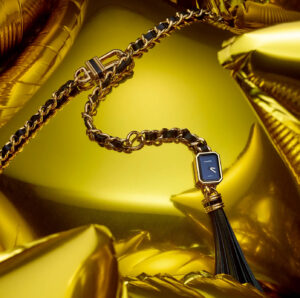The discovery of the first Lamborghini Miura, which had been hiding in plain sight for decades, is an extraordinary story that highlights the fascinating history and mystique surrounding one of the most iconic supercars ever produced. Introduced in 1966, the Miura is often credited with launching the modern era of supercars, thanks to its revolutionary mid-engine design, stunning looks, and breathtaking performance. However, the very first prototype, the P400 Miura, has a story that’s as captivating as the car itself.
The Genesis of the Miura
The Lamborghini Miura, designed by a team of young engineers led by Gian Paolo Dallara and Marcello Gandini, represented a radical departure from traditional automotive engineering. With its transverse mid-engine layout—a first for a road-going car—the Miura set the template for future supercars. The engine placement allowed for better weight distribution, improving handling and stability at high speeds. Combined with its aggressive, sensual lines, courtesy of Gandini, the Miura was not just a car; it was a rolling work of art, turning heads and capturing imaginations.
When it was introduced at the 1966 Geneva Motor Show, the Miura stunned the automotive world. At a time when most performance cars were front-engined grand tourers, the Miura’s design was a daring leap forward. Its 3.9-liter V12 engine produced 350 horsepower, enabling the car to hit a top speed of over 170 mph—a remarkable figure in the mid-1960s.
The Mystery of the First Miura
The Miura was an immediate hit, and Lamborghini went on to produce 764 units between 1966 and 1973. But what became of the very first Miura, the prototype that had been displayed at Geneva? For decades, its whereabouts were unknown, shrouded in mystery. Like many early prototypes, it was assumed by some that the car had been scrapped or lost to time.
In truth, the first Miura had been quietly hiding in plain sight. It had passed through various owners, with its identity obscured as it was repainted and modified over the years. Enthusiasts and collectors assumed it was just another early production model. What they didn’t realize was that this seemingly ordinary Miura was actually the car that had made history as the first of its kind.
Rediscovery and Restoration
The rediscovery of the first Miura came when a group of dedicated Lamborghini historians and restoration experts began to dig deeper into the car’s past. After painstaking research, they were able to verify that this particular Miura was indeed the original prototype, the one that had wowed crowds in Geneva in 1966. The revelation was a sensation in the car world, as it offered a rare opportunity to restore and preserve a piece of automotive history.
Restoration of the Miura was a meticulous process. Every aspect of the car had to be carefully examined to ensure it was returned to its original 1966 specifications. This involved not only restoring the car’s body and mechanical components but also accurately replicating the exact shade of paint, the interior materials, and even the smallest design details. The result is a beautifully restored Miura that is as close as possible to the car that graced the Geneva show floor more than 50 years ago.
Impression
The Miura’s influence on the automotive world cannot be overstated. Prior to its arrival, supercars were essentially an extension of race cars—fast, but not necessarily designed with style or luxury in mind. The Miura, however, brought glamour and exoticism to the world of high-performance cars. Its sleek, low-slung body and powerful V12 engine turned it into a symbol of the Italian “La Dolce Vita” lifestyle, a car that was as desirable for its beauty as for its speed.
The Miura also established Lamborghini as a legitimate competitor to Ferrari, solidifying the brand’s place in the pantheon of supercar manufacturers. It laid the groundwork for future Lamborghini models like the Countach and the Aventador, continuing the legacy of bold, innovative design paired with breathtaking performance.
Moreover, the Miura has had a lasting impact on pop culture. It has been featured in numerous films, most famously in the opening sequence of *The Italian Job* (1969), where a bright orange Miura is driven through the Italian Alps. That scene has become iconic, further cementing the car’s status as a cultural icon.
The story of the first Lamborghini Miura’s rediscovery highlights the importance of preserving automotive history. Cars like the Miura are not just machines; they are cultural artifacts, representing a specific moment in time and the pinnacle of human creativity and engineering. When these cars are lost or destroyed, we lose a tangible connection to that history.
Preserving classic cars, especially those as significant as the Miura, requires a delicate balance between restoration and conservation. While it’s important to return the car to its original condition, care must be taken not to erase its history. Every scratch, every modification tells a story, and those stories are part of what makes these cars special. In the case of the first Miura, its journey through different owners and transformations only adds to its mystique.
Today, the Lamborghini Miura is considered one of the most valuable and collectible cars in the world, with well-preserved examples fetching millions at auction. The first Miura, now fully restored, is expected to command a significant price when it eventually comes to market, given its historical significance.
Beyond its value as a collector’s item, the Miura continues to inspire modern supercars. Its groundbreaking mid-engine layout has become standard in today’s high-performance cars, and its emphasis on combining speed with beauty remains a guiding principle for many automakers.
As Lamborghini looks to the future, with electric and hybrid technology likely playing a key role in the next generation of supercars, the Miura serves as a reminder of the brand’s roots in daring design and engineering innovation. While the technology may change, the spirit of the Miura—bold, beautiful, and uncompromising—will continue to shape the future of the supercar.
The rediscovery of the first Lamborghini Miura is a thrilling chapter in the ongoing story of one of the world’s most iconic cars. After hiding in plain sight for decades, the car has been brought back to life, restored to its original glory, and is now recognized as a crucial piece of automotive history.
The Miura’s legacy is not just one of speed and performance, but of innovation, style, and cultural impact. Its influence can be seen in the design of modern supercars, in popular culture, and in the continued success of Lamborghini as a brand. As we look to the future of automotive design, the Miura remains a symbol of what is possible when bold ideas meet masterful execution.
No comments yet.







